We advise on problems from
Pudendal nerve
Learn more about the pudendal nerve here
What is the pudendal nerve?
The pudendal nerve is a peripheral nerve that supplies the pelvic area, sensory (feeling) and motor (movement), including the genitals and rectum. It has important functions such as sexual function and urination.
The pudendal nerve originates from the sacrum, specifically from S2, S3, and S4. It passes from the sacrum down between the coccygeus muscle, and the piriformis, and travels down over the sacrotuberous ligament to end in the pudendal canal (Alcock’s canal).
Jump to section [Vis]
Pudendal nerve entrapment
When the pudendal nerve becomes pinched or irritated, the condition is called pudendal neuralgia, this can vary in symptoms, but often you will experience pain, burning sensations and sensory disturbances or even numbness in the pelvic floor, genitals, and rectum. This can be caused by a prolapsed bladder, long-distance cycling, prolonged sitting positions, or childbirth.
Sources: NHS & National Library of Medicine
Connection between erection problems and the pudendal nerve?
Some men with pudendal neuralgia may experience erectile dysfunction as part of their symptoms. The pudendal nerve plays a crucial role in a man’s ability to achieve an erection (hardening of the penis), as it supplies the genitals with vital nerve fibers.
Thus, sensitivity is essential for sexual stimulation, as is the reflex function, which sends a signal to increase blood flow to the penis and causes an erection.
Including muscle control, which in addition to supplying blood to the corpus cavernosum, aims to prevent blood from leaving the penis during erection. To train the erection, you must focus your training on the pelvic floor muscles, through kegel exercises, and more advanced strength training.
Source: Sundhed.dk
What else can you do to get an erection, and can you train it?
- If you are overweight, you should lose weight.
- Limit the amount of alcohol and tobacco
- Do more physical activity, it increases blood circulation and increases testosterone levels in the blood.
- Kegel exercises
- Conversation with partner regarding expectations, performance and limitations.
Erectile dysfunction age is a factor!
Together with the State Serum Institute, Project Sexus estimates that 20-25% of men over the age of 65 experience erection problems. The explanation is probably not solely that with age one becomes impotent, but rather other lifestyle factors that ultimately affect the ability to achieve an erection. These factors are atherosclerosis, cardiovascular disease, diabetes, cancer, etc.
Lifestyle in the form of exercise, diet, alcohol and smoking are also important. If you have a high concentration of fat tissue on your stomach, the male sex hormone testosterone will instead be converted into estrogen in the fat tissue.
Source: Dansk Endokrinologisk Selskab

Causes of pudendal nerve problems
Pregnancy and childbirth
During pregnancy, there is increased pressure on the pelvic floor, which can lead to irritation of the pudendal nerve. When women go into labor, the pelvic floor expands, and the great force down on the pelvic floor during the pushing phase can stretch the nerve branches in the pelvic floor, including the pudendal nerve, which can cause severe pain.
Source: Herlev Hospital
Compression or irritation
The pudeldal nerve can become pinched or irritated by prolonged pressure on the pelvic area. This can occur, for example, when cycling, horseback riding, or sitting on hard surfaces.
Trauma or injuries
Falls, accidents or surgical procedures, such as removal of the uterus or cervical ectropion.
Overactive pelvic muscles (Pelvic floor dysfunction)
Muscle spasms and tension in the pelvic floor can trigger irritation of the pudendal nerve.
Inflammation or infection
This most often occurs in connection with pelvic inflammatory disease or infections of the genitals.
Sexual problems related to the pudendal nerve
In addition to erectile dysfunction in men, pudendal neuralgia can lead to numbness or pain in the lower abdomen and genitals.
Sexual dysfunction
This can include decreased libido (lust and desire), orgasms, arousal, difficulty achieving or maintaining an erection (erectile dysfunction) and pain during intercourse.
Sensory disturbances in the penis and clitoris
The pudendal nerve has many sensory transmitter signals from the genitals, which can cause sensory disturbances in the penis and clitoris, which can affect sexual sensation and response.
Pain in the penis and clitoris
There may be pain in the penis and clitoris due to pudendal neuralgia. The pain may occur spontaneously or be triggered by sexual activity.
Pain in the lower abdomen, vagina and vulva.
Sensory disturbances and pain in the lower abdomen, vagina and vulva can be a sign of neuralgia, this can cause discomfort during penetration and affect sexual pleasure. The pain can occur spontaneously or in connection with sexual activity.

Pain in the testicles and pudendal nerve
If you experience sudden pain or discomfort in one or both testicles, it is always recommended to see your doctor first. You may then benefit from seeing an osteopath who can assess muscle tension and nerve-related problems that may be contributing to your pain.
Testicular inflammation: Testicular inflammation should always be investigated by your doctor to determine the cause. In some cases, it may be related to reduced blood flow to the area, in which case osteopathic techniques may be considered after the acute phase to help relieve symptoms and promote healing.
Testicular cancer: This requires medical evaluation and treatment. However, pain relief can be achieved by treating the surrounding structures, including the bladder and prostate.
Sensory disturbances in the testicle: The cause of sensory disturbances in the testicles can be due to several reasons, such as nerve compression or tension of muscles and organs in the area.
Swollen testicle: There are several possible reasons why your testicles may be swollen. It could be inflammation caused by sexually transmitted infections. Twisted testicles, hernia, or vascular deficiency.
Pain in the testicle and back: The pudendal nerve originates from the sacrum, so if you have pain around the pelvic joint (SI joints), decreased movement over a long period of time, this can cause pain in the lower back and affect the pudendal nerve.
Pain in the testicle and abdomen: If you have compression of the pudendal nerve, this can affect the nerve signal around the rectum, which can cause problems such as constipation or rectal incontinence. In addition, hernias can also cause pain in both the testicle and abdomen. Similarly, pain from the area of the testicle and up towards the abdomen can be caused by epididymitis, which, along with swelling, fever and pain in the scrotum, must be treated medically by a doctor.
Why does one testicle hurt?: There can be several reasons why a testicle can be painful, including reduced blood flow, nerve irritation, muscle tension, referred pain from the bladder or prostate.
Potential other causes of testicular pain:
- Testicular torsion (twisted testicles)
- Inflammation (Orchitis)
- Epididymitis
- Hernia (Organ or tissue protruding through a weakened abdominal wall)
- Testicular cancer
- Trauma or injury
- Referred pain from the back or abdomen
- Hydrocele (Fluid and swelling around the testicles)
- Varicocele (Enlargement of the veins in the scrotum)
Sources: Sundhed.dk & Cleveland Clinic
Osteopathy and pudendal neuralgia treatment
The pudendal nerve can cause great discomfort and a lot of pain, where conservative treatment can play an important role in relieving the symptoms.
The traditional treatment for pudendal nerve problems is conservative training with physiotherapy with and without TENS (electrical device), medical treatment, Ultrasound/CT-guided blockade (adrenal corticosteroid), botox for hypertonia of muscles, or surgery where you decompress the nerve (removes pressure on the nerve)
It is also crucial to avoid activities that aggravate the pain, such as cycling, or to consider relief with a saddle pad/sitting position.
Osteopathy uses a holistic osteopathic approach to evaluate and treat pudendal nerve problems.
Osteopathic treatment involves careful examination and treatment of the entire body, including the pelvis, back, hips and related muscles, as well as pelvic organs such as the uterus, bladder and prostate. The goal of treatment is to release any structures that may be pinching or irritating the nerve.
Sources: National Library of Medicine & WHRIA

Good advice for pudendal neuralgia
Bowel and bladder control: Avoid straining during bowel movements or urination as this can trigger pain. Avoid using laxatives with bowel stimulants.
Changing sitting positions: Make sure to change your sitting position frequently to reduce the impact on the sciatic nerve. Reducing the time you sit also has a beneficial effect.
Reduce physical activity that increases irritation to the nerve and causes more symptoms: The two biggest impacts on the pelvic floor are cycling and horseback riding.
Exercises for pudendal nerve problems
- Pelvic floor training – both short and long training sessions.
- Pelvic lift with pelvic floor contraction
- General mobility exercises for the lower back/hips are a good idea.

Often related pain

Side stitch
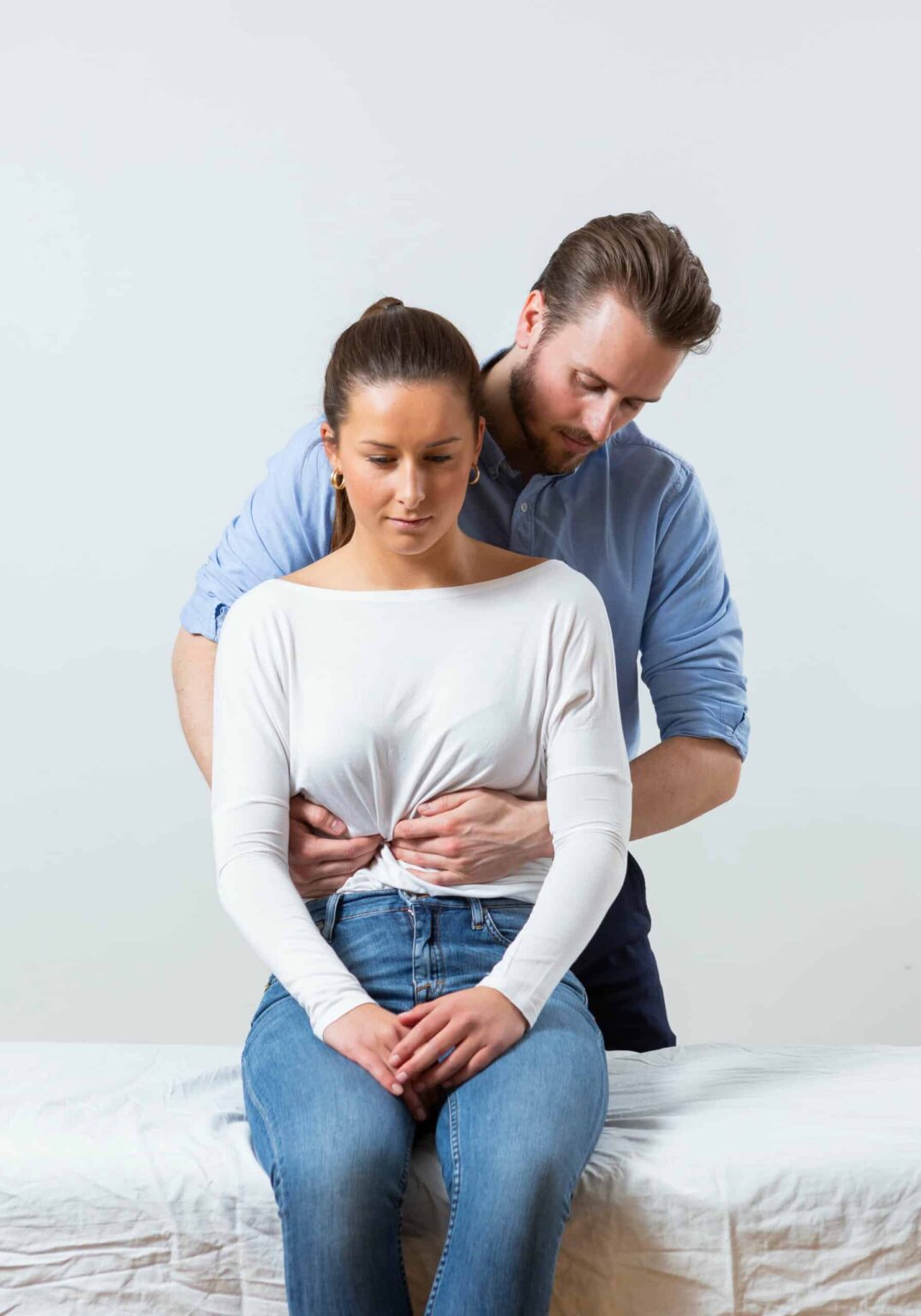
Hidden constipation
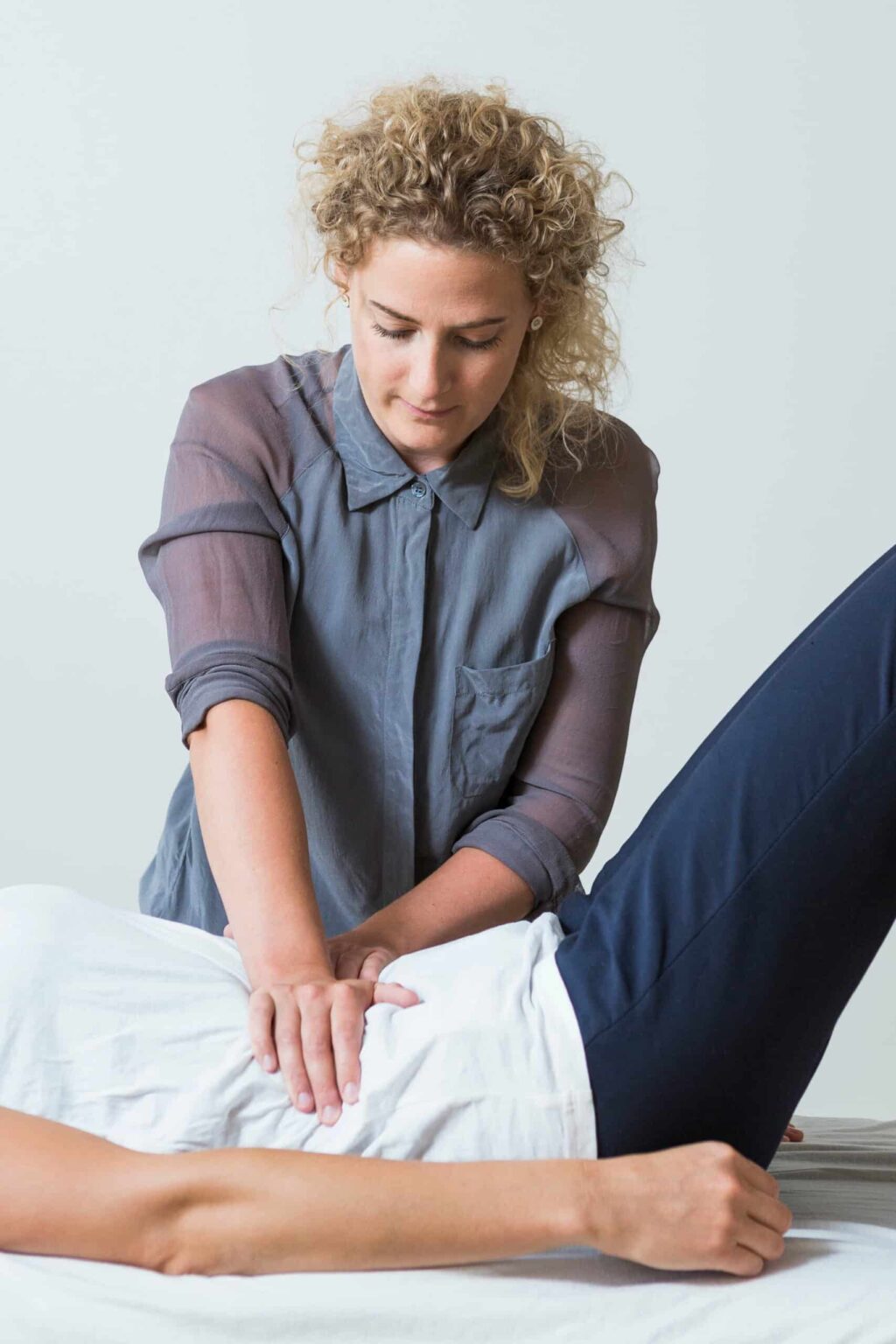
Urinary incontinence
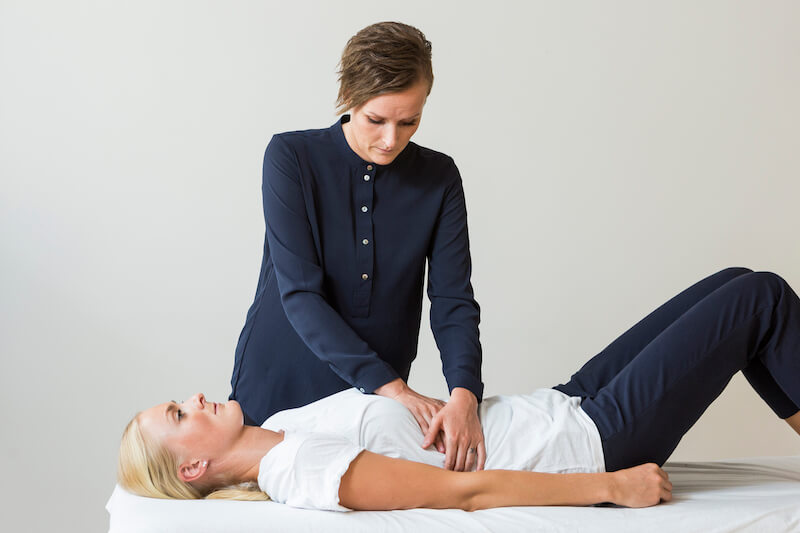
Celiac disease
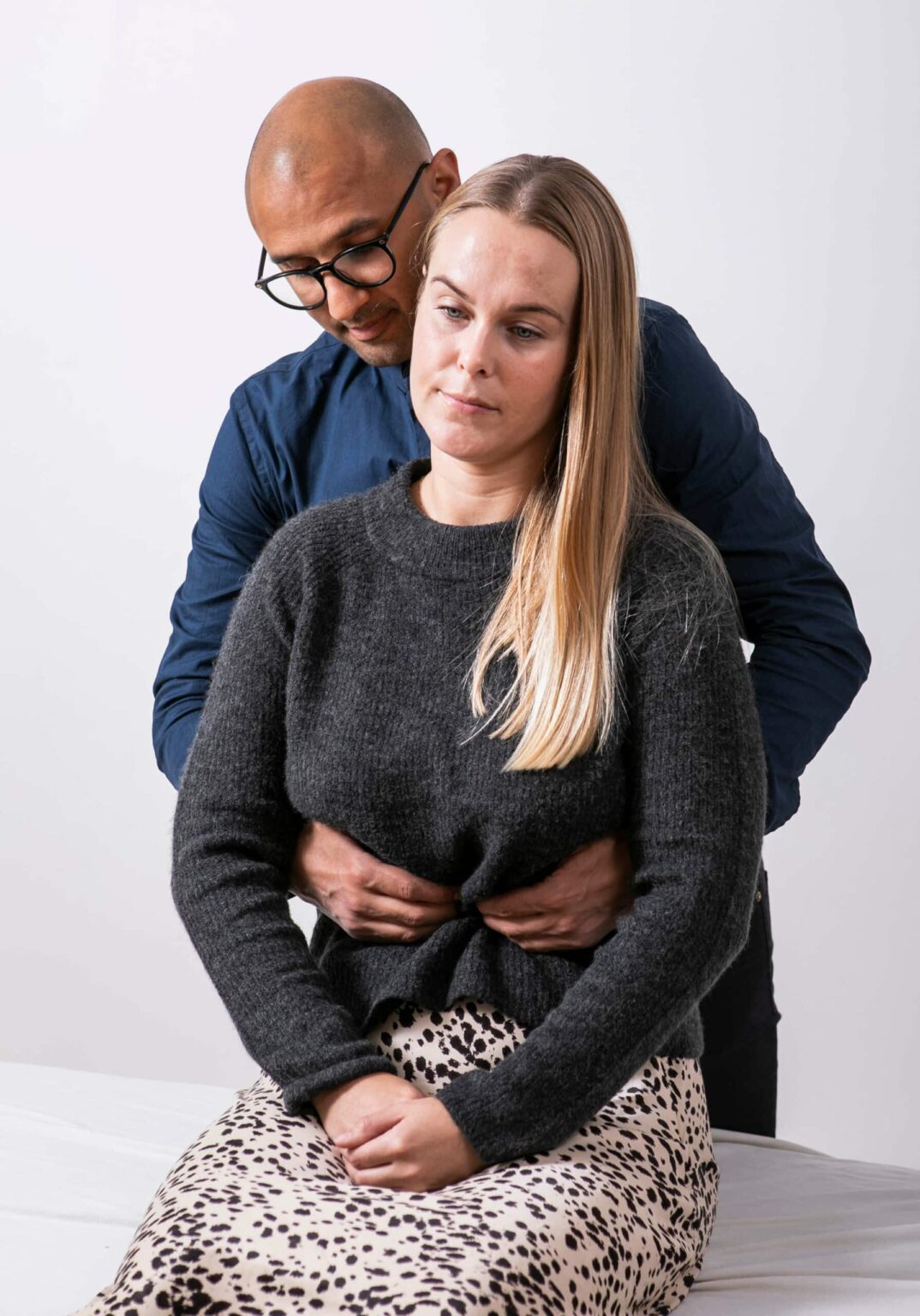
Ulcer

Hernia
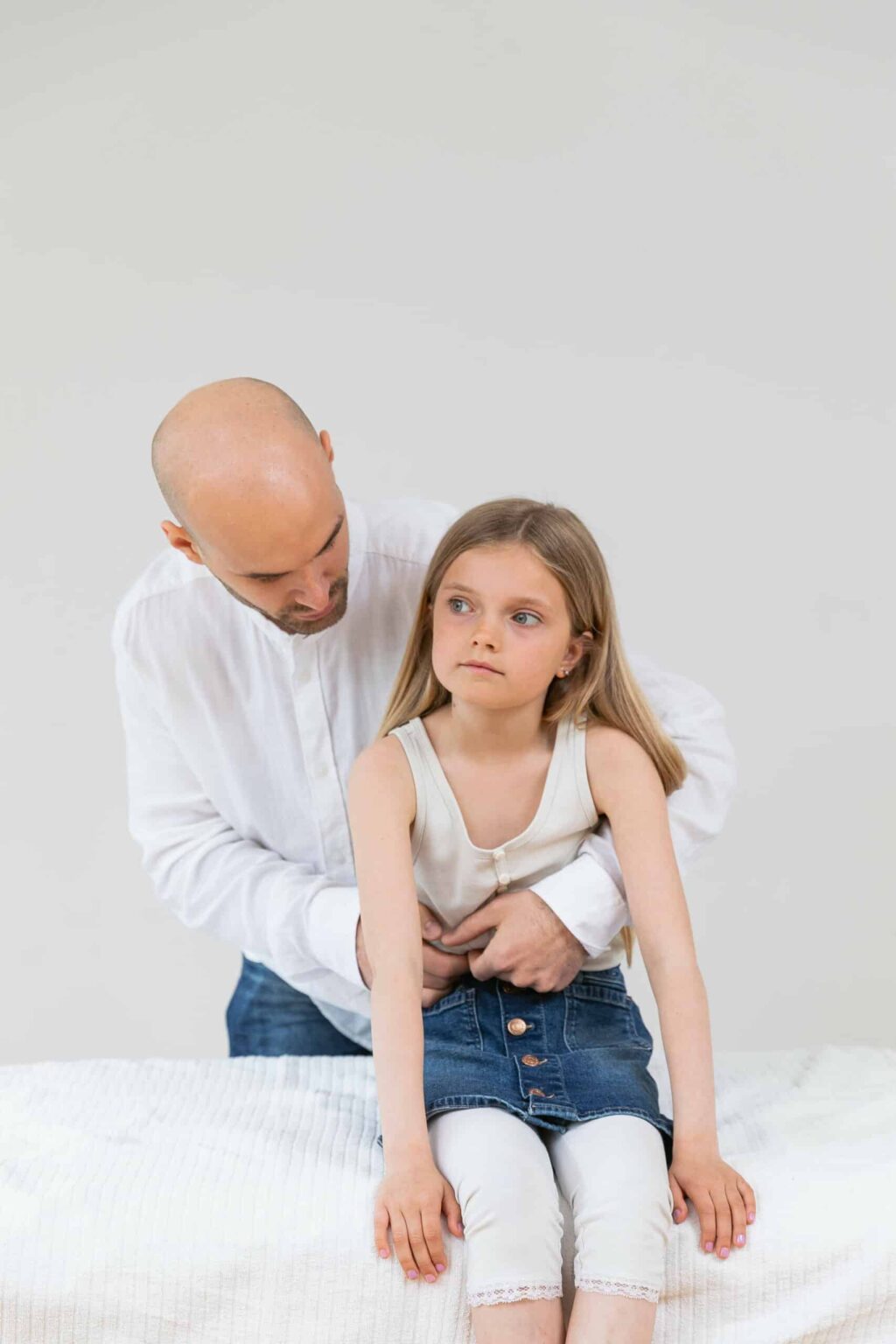
Lactose intolerance

